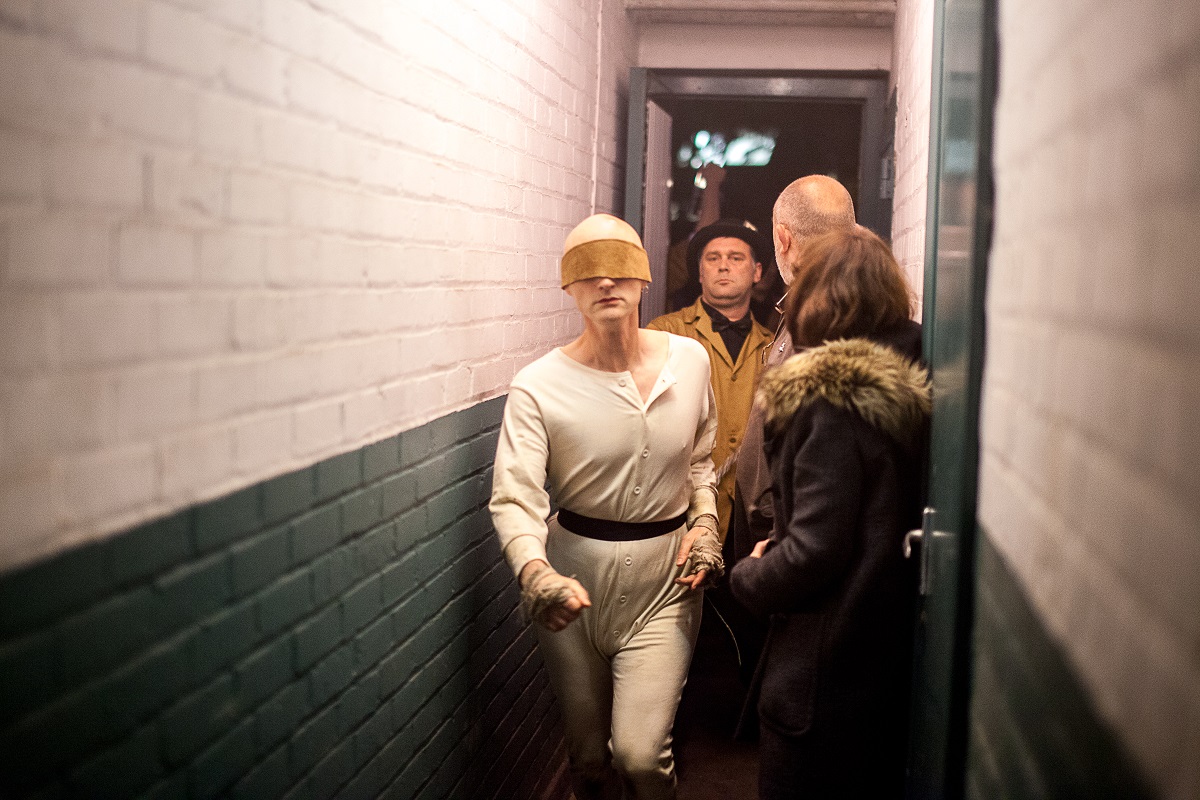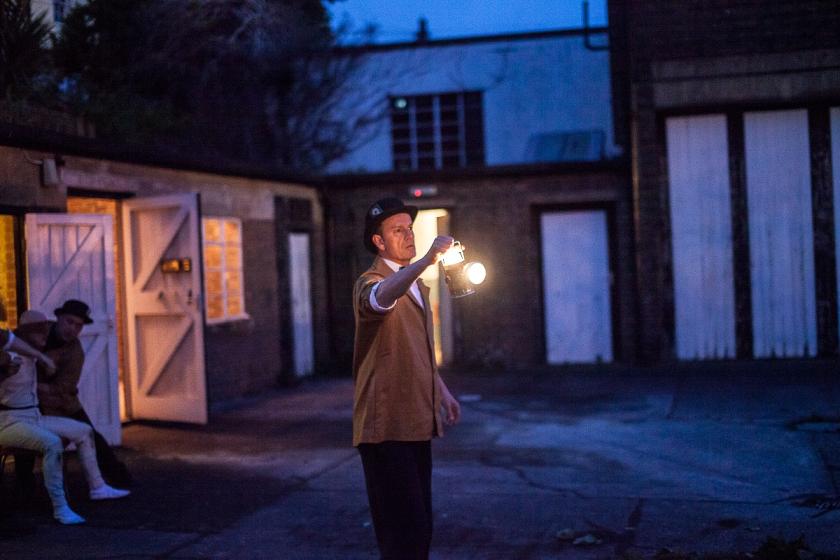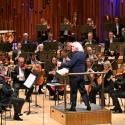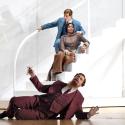The question about Harrison Birtwistle’s Down by the Greenwood Side is: what is it? Designated by the composer as a “dramatic pastoral”, which is not very enlightening, it is not really an opera, nor a play with music, nor a piece of performance art, but somehow a winning combination of all three.
Commissioned by the Brighton Festival in 1969, the revival of Down by the Greenwood Side is part of the celebrations for the composer’s 80th-birthday year, and Sir Harrison was in the sold-out audience at the Sunday performance. But it is hard to connect the present Birtwistle, elder statesman of the new music scene, with the feisty, aggressive iconoclasm of this early piece.
The site-specific performance took place in the inspired location of a disused brewery depot in Lewes. The show started in the concrete yard, as the audience arrived. Nine bedraggled women quietly sang folksongs before moving in formation through the audience. St George (James Garnon) arrives on horseback, in a green string vest; a shaven, blindfolded prisoner arrives on a chain from the stables where he is kept. Four bowler-hatted and bow-tied Fight Club Men make preparations for a fight between St George and the shaven prisoner known as The Slasher (Nick Tigg). This is all before any music has started, except for an occasional tolling bell and gentle drum beat.
 Once we have moved inside, and the music starts, the story develops in two strands. In the middle of the room, on a raised boxing ring, St George (representing the coming of the new year) and The Slasher (representing winter) fight. St George is killed, twice, but returns to life. Meanwhile, on the raised grassy hillocks around the outside, a lone woman, Mrs Green, sings the ballad of a countrywoman who murders her twin sons. There is no interaction between these strands until the very end, when the stories start to blur.
Once we have moved inside, and the music starts, the story develops in two strands. In the middle of the room, on a raised boxing ring, St George (representing the coming of the new year) and The Slasher (representing winter) fight. St George is killed, twice, but returns to life. Meanwhile, on the raised grassy hillocks around the outside, a lone woman, Mrs Green, sings the ballad of a countrywoman who murders her twin sons. There is no interaction between these strands until the very end, when the stories start to blur.
This production of Down by the Greenwood Side is a riotous, baffling, bawdy and eclectic thing, but a definite success. The music from the nine-piece band underpins the spoken dialogue and the sung sections, but offers a discursive commentary on the action, rather than accompanying in a traditional sense. The music is typical Birtwistle, determined, resolute, noisy and unsentimental, and operates as a force of nature. The band and conductor Christopher Stark were excellent. Aside from the knockabout action on stage, which was well choreographed, the emotional heart of the music is in Mrs Green’s ballads. Here, Elizabeth Cragg’s singing was raw and heartfelt, although the words were hard to distinguish from the other side of the space.
But most praise must go to the director, Susannah Waters, who found a visual language that made sense of the more insane elements of the score, and created a performance which fit so snugly into its venue that they could have been made for each other. Ultimately, it does not matter what Down by the Greenwood Side is: it is, gloriously and eccentrically, what it is, and that should be celebrated.















Add comment